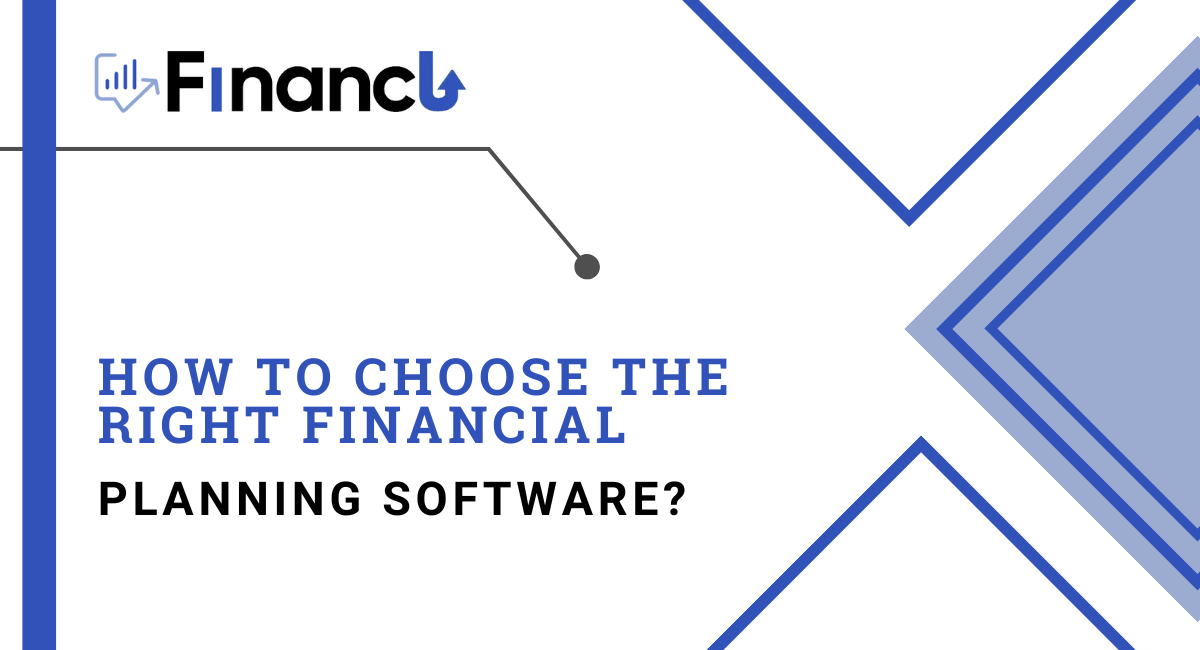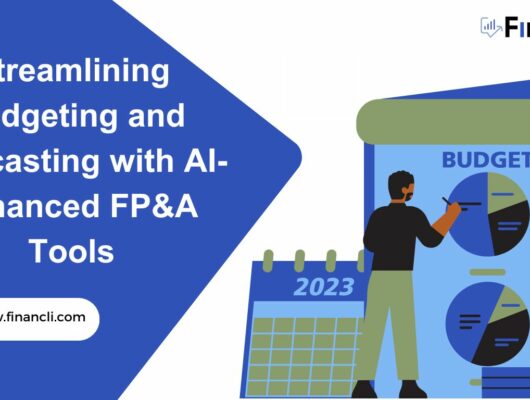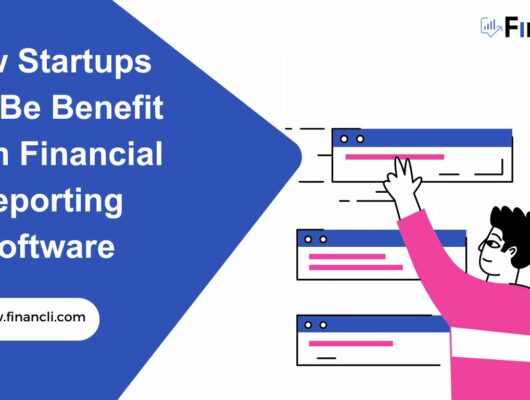
Financial planning software is crucial in helping individuals and businesses effectively manage their finances. In today’s complex financial landscape, you face unique needs and challenges that require sophisticated tools to navigate.
This blog provides a comprehensive guide in selecting the right financial planning software to meet your requirements.
1. Define Your Financial Goals and Requirements
Before diving into the world of financial planning software; it is essential to identify your specific financial goals and requirements. This step forms the foundation of your financial planning journey.
Understanding your needs and priorities allows you to narrow down the software options that align with your financial objectives. Begin by assessing your current financial situation and determining the areas where you need assistance.
Do you need help with budgeting and expense tracking? Do you need a tool to monitor your investments and manage your portfolio effectively?
Are you looking for assistance with tax planning and reporting? Do you require retirement planning tools and projections to prepare for a financially secure future?
Consider other features that may be important to you, such as goal setting, debt management tools, and insurance analysis capabilities.
2. Evaluate Features and Functionality
Once you have identified your financial goals and requirements, evaluating the key features and functionalities offered by financial planning software is crucial. The software should provide robust tools and capabilities that align with your needs.
Budgeting and expense tracking capabilities are essential for a comprehensive view of your financial situation. Look for software that allows you to create and monitor budgets, track expenses, and generate reports to analyze your spending habits.
Investment tracking and portfolio management features are valuable for individuals and businesses with investments. The software should provide tools to monitor investment performance, track asset allocation, and generate performance reports.
Tax planning and reporting functionalities help ensure accurate tax management. Look for software that provides features such as tax calculators, tax optimization tools, and the ability to generate tax reports.
Retirement planning tools and projections are crucial for individuals planning for their future financial security. The software should offer tools to estimate retirement income, assess potential shortfalls, and develop strategies to bridge the gap.
Consider other features that may be important to you, such as goal-setting tools to track progress toward financial milestones, debt management tools to manage and prioritize debt repayment, and insurance analysis capabilities to evaluate insurance needs and coverage options.
3. Consider Integration and Compatibility
Integration and compatibility are vital factors when selecting financial planning software. Ensuring that the software seamlessly integrates with your existing financial systems and processes is essential. This integration allows for efficient data transfer and ensures that you have a holistic view of your financial information.
Check if the software integrates with accounting software, banking systems, and investment platforms you currently use. This integration enables automatic data syncing and minimizes the need for manual data entry.
Consider compatibility with mobile devices and online accessibility. Mobile compatibility allows you to access your financial data on the go, while online accessibility ensures that you can securely access your financial information anywhere.
Smooth data transfer and synchronization between platforms are crucial for maintaining accurate and up-to-date financial information. Verify that the software offers easy data import and export options, ensuring seamless integration with your existing systems.
4. Ensure Security and Data Privacy
Your financial information security and data privacy should be a top priority when choosing financial planning software. Protecting sensitive data from unauthorized access and maintaining data privacy is crucial.
Look for financial planning software that employs robust security measures such as data encryption, user authentication, and secure data storage. Encryption ensures that your data remains confidential and protected from potential breaches.
User authentication adds an extra layer of security by requiring user verification before accessing sensitive financial information. This authentication can include passwords, biometrics, or two-factor authentication.
Ensure the software provider adheres to industry regulations, such as the General Data Protection Regulation (GDPR) and the California Consumer Privacy Act (CCPA). Compliance with these regulations shows the provider’s commitment to data privacy and protection.
Backup and disaster recovery measures implemented by the software provider are crucial for safeguarding your data against potential risks. Regular data backups and redundant storage systems ensure that your financial information remains secure and accessible even in the event of a system failure or data loss.
5. Consider User Interface and User Experience
A user-friendly interface and intuitive navigation are essential for a positive user experience when using financial planning software. The software should be designed to make it easy clients to navigate and utilize its features effectively.
Look for software that offers customizable dashboards and reports, allowing you to tailor the information according to your preferences. This customization ensures that you can focus on the financial metrics that matter most to you.
Access to training resources, tutorials, and customer support is valuable when using financial planning software. Ensure that the software provider offers comprehensive resources to help you learn how to use the software effectively. Responsive customer support is also essential for resolving any issues or answering questions that may arise during your usage of the software.
6. Evaluate Pricing and Scalability
Consider the pricing models offered by different financial planning software providers. Common pricing models include subscription-based and one-time purchase options. It’s important to evaluate the pricing structure that aligns with your budget and financial goals.
Moreover, assess the scalability of the software. As your financial needs evolve over time, the software should have the flexibility to grow with you. Ensure that the software can accommodate additional features or capabilities as your requirements expand.
Factor in the total cost of ownership when evaluating pricing. This includes not only the initial purchase or subscription cost but also any maintenance and support fees associated with the software. Understanding the full financial implications will help you make an informed decision.
7. Research and Compare Software Providers
Conduct thorough research on various financial planning software providers to gather insights and make an informed decision. Reading reviews, exploring customer testimonials, and seeking recommendations from trusted sources can provide valuable information about the software’s performance and user satisfaction.
Conclusion
Selecting the right financial planning software is crucial to effectively manage their finances and achieve their financial goals. By defining your financial goals and requirements, evaluating features and functionality, considering integration and compatibility, prioritizing security and data privacy, focusing on user interface and user experience, assessing pricing and scalability, and conducting thorough research and comparison, you can make an informed decision.
Remember, the right financial planning software is a powerful tool that can significantly enhance your financial management and help you achieve your financial goals. Take the time to prioritize your needs, explore the available options, and choose the software that best aligns with your unique requirements. With the right financial planning software in place, you can navigate your financial journey with confidence and make informed decisions for a brighter financial future.
FAQs
- Why is it important to define your financial goals and requirements before selecting financial planning software?
Defining financial goals and requirements helps clients identify their specific needs and priorities. By understanding their goals, such as budgeting, investment tracking, tax planning, retirement planning, goal setting, debt management, and insurance analysis, clients can choose software that aligns with their objectives and provides the necessary tools and features to support their financial journey.
- How can integration and compatibility benefit clients when selecting financial planning software?
Integration and compatibility allow clients to streamline their financial management processes. When financial planning software integrates smoothly with existing systems like accounting software, banking systems, and investment platforms, it enables seamless data transfer and synchronization. This ensures accurate and up-to-date financial information, simplifies workflows, and provides a holistic view of their finances.
- What security and data privacy considerations should clients prioritize when choosing financial planning software?
Clients should prioritize the security and data privacy features offered by financial planning software. Look for software that employs robust security measures such as data encryption, user authentication, and secure data storage to protect sensitive financial information. Compliance with industry regulations like GDPR and CCPA is essential. Backup and disaster recovery measures implemented by the software provider are also crucial to safeguard client data.
- How does the user interface and user experience of financial planning software impact clients?
A user-friendly interface and intuitive navigation are essential for clients when using financial planning software. Software with customizable dashboards and reports allows clients to view and analyze financial data according to their preferences. Access to training resources, tutorials, and customer support ensures a positive user experience and enables clients to effectively utilize the software’s features and functionalities.
- What factors should clients consider when evaluating the pricing and scalability of financial planning software?
When evaluating pricing and scalability, clients should consider their budget and long-term financial goals. Different pricing models, such as subscription-based or one-time purchases, should be assessed. It’s important to factor in maintenance and support fees to determine the total cost of ownership. Scalability is also crucial, ensuring the software can accommodate future needs and provide additional features or capabilities as clients’ financial requirements evolve.






